Reduce Climate

Can Climate-Smart Technologies help reduce global warming ?
Climate-smart technologies, designed to mitigate and adapt to climate change impacts, aim to reduce greenhouse gas emissions, enhance carbon sequestration, and improve resource efficiency. These technologies can help reduce global warming through energy efficiency, renewable energy, and carbon capture and storage. They also aid in adaptation through water management, agricultural innovation, and early warning systems. Co-benefits include resource conservation, economic growth, and health improvements. However, scaling up these technologies, policy support, and equity are challenges that need to be addressed for their successful implementation.

How can climate risk management help reduce the impact of climate change on the environment ?
Climate risk management is a multi-step approach that helps mitigate the effects of climate change on the environment. It involves identifying and assessing risks, prioritizing them, developing adaptation strategies, implementing mitigation efforts, fostering collaboration, and continuously monitoring outcomes. This proactive method aims to protect natural systems from adverse climate impacts, promote sustainable practices, and reduce greenhouse gas emissions. By adopting these measures, we can build resilience against climate-related risks and contribute to a more sustainable future for all.

What are the benefits of taking climate action ?
Taking climate action is crucial for the survival and well-being of our planet and its inhabitants. Here are some of the benefits that come with taking climate action: 1. Health Benefits: - Improved Air Quality: Reducing greenhouse gas emissions can help improve air quality, leading to fewer respiratory problems and a lower risk of lung cancer. - Reduced Heat-Related Illnesses: Taking steps to mitigate climate change can help reduce the frequency and intensity of heatwaves, which in turn reduces the risk of heat-related illnesses like dehydration and heat exhaustion. 2. Economic Benefits: - Job Creation: Investing in renewable energy sources like wind and solar power creates jobs in manufacturing, installation, and maintenance. - Cost Savings: By reducing our dependence on fossil fuels, we can save money on energy bills and reduce the economic impact of fluctuating oil prices. 3. Environmental Benefits: - Biodiversity Preservation: Taking climate action helps protect habitats and ecosystems, preserving biodiversity and preventing species extinction. - Water Conservation: Mitigating climate change can help preserve water resources by reducing the severity and frequency of droughts. 4. Social Benefits: - Community Resilience: Taking climate action can help build more resilient communities by preparing for and adapting to the impacts of climate change. - Public Awareness: Climate action raises public awareness about environmental issues, promoting a culture of sustainability and encouraging individuals to make eco-friendly choices in their daily lives. In conclusion, taking climate action offers numerous benefits that extend beyond just protecting the environment. It's essential for our health, economy, and social well-being. By working together to reduce greenhouse gas emissions and adapt to the changing climate, we can create a more sustainable and resilient future for all.

Can TCFD help reduce the impact of climate change on businesses ?
The Task Force on Climate-related Financial Disclosures (TCFD) aims to provide a framework for companies to disclose information about their exposure to climate-related risks and opportunities, as well as their strategies for managing these risks and seizing opportunities. TCFD can help reduce the impact of climate change on businesses by promoting risk management, increasing investor confidence, driving innovation and investment in sustainable solutions, preparing for regulatory compliance, and facilitating stakeholder engagement. While TCFD alone cannot directly reduce the impact of climate change on businesses, it serves as a crucial tool in helping companies understand and manage their exposure to climate-related risks.

How can we prevent or reduce the impact of climate disasters ?
The provided text discusses measures to prevent or reduce the impact of climate disasters, which can be summarized as: 1. **Reducing Greenhouse Gas Emissions** by switching to renewable energy sources, improving energy efficiency, planting trees, and reducing deforestation. 2. **Adaptation Measures** such as building resilient infrastructure, implementing flood control measures, using drought-resistant crops, and establishing early warning systems. 3. **International Cooperation** through signing and implementing international agreements like the Paris Agreement and providing financial and technological support to vulnerable regions. 4. **Education and Awareness** initiatives that include educational programs and public campaigns about climate change. 5. **Research and Innovation** in climate modeling and clean technology development.
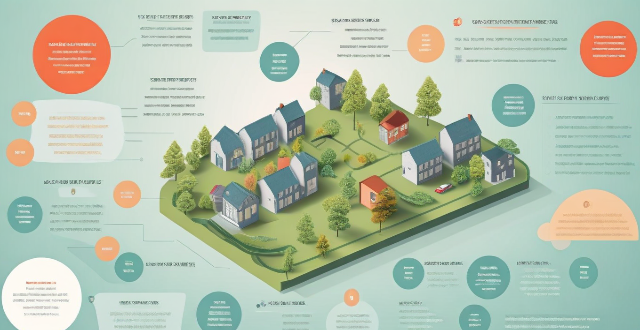
How can businesses use climate risk assessments to make informed decisions ?
Businesses can use climate risk assessments to make informed decisions by identifying and evaluating potential impacts of climate change on operations, supply chains, and financial performance. They should assess the impact on business operations, incorporate these assessments into strategic planning, develop adaptation and mitigation strategies, monitor and update assessments regularly, and engage stakeholders in the process. By doing so, companies can prioritize areas where they need to take action, reduce exposure to risks, ensure that long-term goals consider potential effects of climate change, adjust operations to cope with impacts, reduce greenhouse gas emissions, stay ahead of emerging challenges, and build a culture of sustainability within the organization.

Can using a carbon footprint calculator help reduce my environmental impact ?
Using a carbon footprint calculator can help individuals reduce their environmental impact by raising awareness, identifying areas for improvement, setting goals, tracking progress, and encouraging sustainable habits.

What measures can be taken to reduce the health impacts of climate change ?
Climate change is a significant threat to human health, but measures can be taken to reduce its impacts. These include reducing greenhouse gas emissions through renewable energy sources and energy efficiency, adapting to climate change by building resilient infrastructure and improving water management, promoting healthy lifestyles such as healthy eating habits and physical activity, and educating people about the health impacts of climate change.
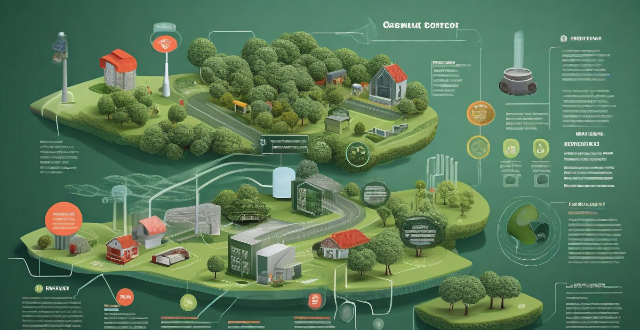
What is the role of renewable energy in achieving climate commitments ?
Renewable energy is a key component of global efforts to reduce greenhouse gas emissions and mitigate climate change, contributing to environmental protection, economic prosperity, and social well-being. It reduces carbon footprint, enhances energy security, stimulates economic growth, improves public health, supports sustainable development, advances technology and innovation, and contributes to international cooperation. The transition to renewable energy is crucial for meeting climate commitments and ensuring a sustainable future.
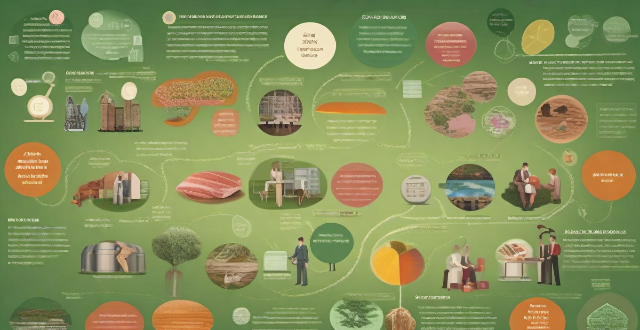
What policies can be implemented to reduce the number of climate refugees in the future ?
Policies to reduce the number of climate refugees in the future include investment in renewable energy, afforestation and reforestation, sustainable agriculture practices, coastal protection measures, and international cooperation and funding. These policies aim to mitigate the effects of climate change and prevent displacement of people due to climate change-related events.

How does the Paris Climate Agreement aim to reduce global warming ?
The Paris Climate Agreement, adopted in 2015, is a global pact with the primary objective of limiting global warming to below 2°C and pursuing efforts to limit it further to 1.5°C above pre-industrial levels. This summary explores key aspects of the agreement: 1. **Long-term Temperature Goals** emphasize holding the increase in global average temperature well below 2°C and pursuing efforts for 1.5°C. 2. **Nationally Determined Contributions (NDCs)** require each country to set voluntary targets on greenhouse gas emissions and climate change plans. 3. **Enhanced Transparency and Accountability** introduce a system for monitoring compliance through regular reporting. 4. **Finance and Capacity Building** involve developed countries providing financial assistance and capacity building to developing nations. 5. **Loss and Damage** address inevitable impacts of climate change by creating a mechanism for dealing with associated losses. 6. **Global Stocktake** is a periodic review process to assess global progress toward meeting the agreement's goals. 7. **Cooperation and Implementation** highlight the importance of international collaboration for effective implementation of the agreement. These components work together to create a comprehensive approach aimed at mitigating the effects of climate change and adapting to its impacts.
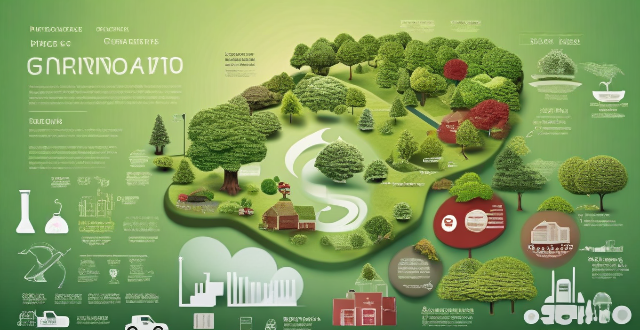
What is the impact of waste reduction on global climate change ?
This text discusses the importance of waste reduction in mitigating global climate change, highlighting how it can reduce greenhouse gas emissions, conserve natural resources, and protect ecosystems and biodiversity. It suggests ways to reduce waste such as reducing consumption, reusing items, recycling materials, composting organic waste, and supporting sustainable practices.

How can insurers help promote sustainability and reduce carbon emissions ?
Insurance companies can promote sustainability and reduce carbon emissions by offering sustainable insurance products, encouraging sustainable practices among clients, investing in sustainable projects, and reducing their own carbon footprint.

How do energy-efficient buildings reduce carbon footprint ?
Energy-efficient buildings are crucial for reducing carbon footprint by minimizing energy use and optimizing resources. They incorporate features like proper insulation, air tightness, advanced HVAC systems, renewable energy sources, and smart technology to reduce energy consumption, lower greenhouse gas emissions, and mitigate climate change impact. These structures offer benefits such as lower utility bills, increased comfort, reduced maintenance costs, and higher resale value. Energy-efficient buildings play a significant role in combating climate change and promoting a sustainable future.

How do climate-friendly products help reduce carbon emissions ?
Climate-friendly products contribute to reducing carbon emissions by promoting sustainable practices. They achieve this through energy efficiency, use of renewable materials, durability, reduced transportation impact, and environmentally conscious packaging. These products help in conserving resources, minimizing waste, and lowering pollution levels, ultimately aiding in the fight against climate change.

How can climate financing be used to mitigate and adapt to climate change ?
Climate financing is a key mechanism for both mitigating and adapting to the effects of climate change. It involves funding initiatives such as renewable energy projects, green transport, energy efficiency improvements, and research into cleaner technologies for mitigation. For adaptation, it supports infrastructure resilience, agricultural adjustments, health system strengthening, and community-based strategies. International cooperation through global climate funds and technology transfer further enhances the impact of climate finance. Collaboration among various stakeholders is crucial to effectively utilize climate finance for a sustainable future.

How does climate information sharing help in mitigating climate change ?
Climate information sharing is vital for mitigating climate change by enabling informed decision-making, raising public awareness, supporting research and innovation, promoting international cooperation, facilitating adaptation strategies, and leveraging technology. It empowers governments, businesses, communities, and individuals to take actions that reduce greenhouse gas emissions and adapt to the changing climate.
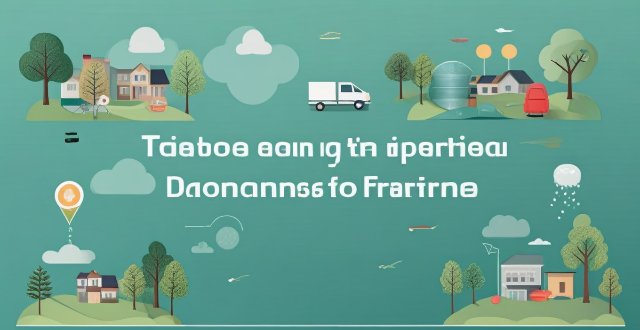
How can we reduce our carbon footprint to mitigate climate change ?
The text discusses ways to reduce carbon footprints to mitigate climate change. It suggests switching to public transportation or carpooling, using renewable energy sources, eating less meat and dairy, reducing waste through reuse and recycling, conserving water, and supporting policies and initiatives.
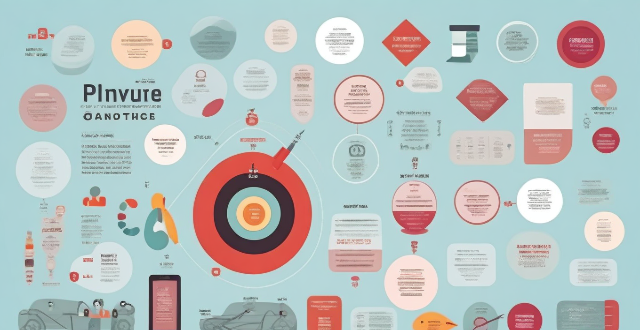
Can regular physical activity reduce anxiety levels ?
Regular physical activity can help reduce anxiety levels by improving mood, reducing stress hormones, promoting better sleep, increasing self-esteem and confidence, and providing social support. Engaging in at least 30 minutes of moderate-intensity exercise per day can significantly reduce anxiety symptoms.

How can climate financing help developing countries ?
Climate financing is essential for developing countries to adapt to and mitigate climate change. It funds infrastructure projects, capacity building, renewable energy, sustainable land use, and research & development. These efforts help build resilient economies and reduce environmental impact.
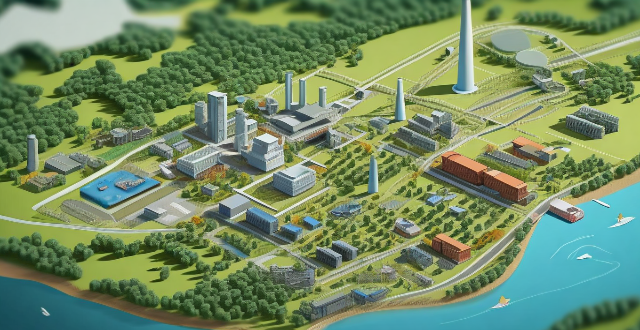
How can we reduce the impact of climate change on the environment ?
To mitigate the effects of climate change, it is crucial that individuals, communities, and governments take action to reduce the impact of climate change on the environment. Some strategies for doing so include reducing greenhouse gas emissions by switching to renewable energy sources and improving energy efficiency, protecting and restoring ecosystems such as forests, wetlands, and grasslands, promoting sustainable land use practices in agriculture and urban planning, encouraging circular economy practices like reducing, reusing, and recycling materials, and supporting clean transportation options like public transit and electric vehicles. These efforts can lead to significant reductions in greenhouse gas emissions and make a positive difference for future generations.

Can certain foods help reduce inflammation in athletes
Certain foods can help reduce inflammation in athletes. These include anti-inflammatory spices, fruits and vegetables, whole grains, healthy fats, and protein. It's also important to avoid processed foods, sugary drinks, and red meat. By eating a balanced diet full of healthy foods, athletes can reduce inflammation and improve their performance.

How can green finance help reduce carbon emissions and combat climate change ?
Green finance employs financial resources to support environmental sustainability, aiming to reduce carbon emissions and combat climate change. Strategies include prioritizing renewable energy investments, supporting clean transportation, encouraging sustainable agriculture, promoting energy efficiency in buildings, increasing investment in climate change adaptation, creating markets for carbon credits, and enhancing environmental risk management. These actions help redirect capital towards eco-friendly activities, offering new business opportunities and attractive returns for investors focused on sustainability.
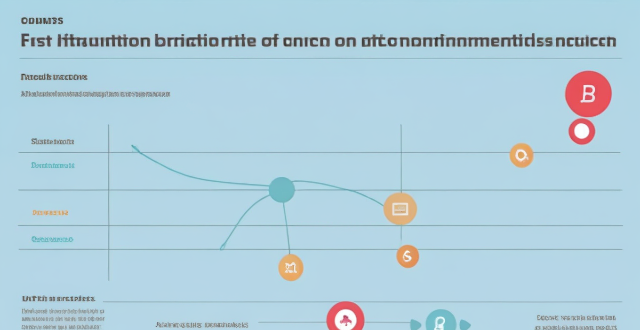
How can we use climate predictions to mitigate the effects of climate change ?
Climate predictions are vital in mitigating climate change impacts. They help in adaptation planning, guiding mitigation strategies, informing policy development, raising awareness, and driving research and innovation. By understanding future climate conditions, we can take proactive measures to reduce the effects of climate change on our environment and society.

What is climate financing and why is it important for combating climate change ?
Climate financing is crucial for mitigating climate change by funding initiatives that promote renewable energy, sustainable infrastructure, and adaptation to climate impacts. It enables international cooperation, drives innovation, supports policy development, and encourages private sector participation. Furthermore, it contributes to achieving global goals and enhances public awareness about climate issues.

How can we promote sustainable development to reduce the risk of climate conflicts ?
Sustainable development is crucial for reducing the risk of climate conflicts. To promote it, we can increase awareness and education, promote renewable energy sources, implement sustainable agriculture practices, invest in green infrastructure, encourage waste reduction and recycling, and collaborate with governments and NGOs.
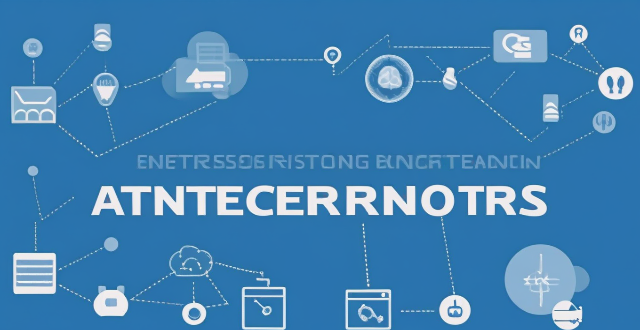
Can upgrading my internet package reduce network latency ?
The text discusses the topic of network latency and whether upgrading an internet package can reduce it. It outlines various factors affecting network latency, including ISP infrastructure, type of connection, location, and network devices. The text then explores different upgrade scenarios, such as moving from DSL to fiber optic or increasing bandwidth, and their potential impact on reducing latency. It concludes that while upgrading can potentially reduce latency, the specifics of each situation should be considered before deciding to upgrade.

What are the most popular climate-friendly products in the market today ?
The article discusses popular climate-friendly products available in the market today. These include solar panels, electric cars, smart thermostats, and LED light bulbs. Solar panels are a renewable energy source with low maintenance costs and a long lifespan. They reduce reliance on fossil fuels and have government incentives for installation. The benefits of using solar panels include decreased carbon footprint, lower electricity bills, energy independence, and a cleaner environment. Electric cars have lower greenhouse gas emissions, high efficiency, low operational costs, advanced technology features, and a wide range of models available. They reduce air pollution, offer a quieter driving experience, provide potential tax credits and rebates, and support the transition to renewable energy sources. Smart thermostats optimize energy efficiency, have remote control capabilities, learning algorithms to adapt to user preferences, compatibility with various HVAC systems, and easy installation process. They significantly reduce heating and cooling costs, improve indoor comfort levels, minimize wasted energy usage when not at home or sleeping, and contribute to a smaller carbon footprint through energy conservation. LED light bulbs have a long lifespan compared to traditional bulbs, low energy consumption, bright natural light quality, variety of styles and colors available, and compatibility with smart home systems for automated lighting control. They drastically reduce electricity usage for lighting needs, lessen the need for frequent replacements due to longer lifespan, offer customizable lighting options for different moods and tasks, and support environmental conservation efforts by using less energy overall.

Can music help reduce perceived exertion during exercise ?
Music can help reduce perceived exertion during exercise by positively influencing mood and cognition, and acting as a distraction from bodily symptoms associated with fatigue. Numerous studies have shown the benefits of music on perceived effort levels during workouts, but individual preferences and contextual factors play significant roles. To potentially benefit from reduced perceived exertion, it's important to select music that resonates personally and matches the intensity of your workout.

Can exercise reduce the risk of developing cardiovascular diseases ?
Cardiovascular diseases (CVDs) are a leading cause of death worldwide, and regular physical activity or exercise is one of the most effective ways to reduce the risk of developing them. Exercise helps improve blood circulation, lower cholesterol levels, reduce inflammation, manage weight, and improve glucose control. The American Heart Association recommends at least 150 minutes per week of moderate-intensity aerobic activity or 75 minutes per week of vigorous-intensity aerobic activity, along with muscle-strengthening activities at least two days per week.